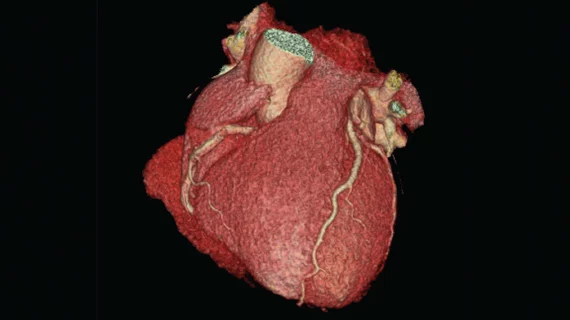A new report from Australia highlights the feasibility of transplanting hearts from donors who have experienced circulatory death—a practice which, if adopted, could expand heart transplant volume by an estimated 20 percent.
Hong Chee Chew, MS, and colleagues with St. Vincent’s Hospital in Sydney began a donation after circulatory death (DCD) protocol for heart transplantation in July 2014. From then until April 2018, they transplanted 23 hearts from a possible 45 donors who met specific DCD donor criteria.
“For the past 5 decades with rare exceptions, heart transplant donors have been heart-beating donors who had met brain death criteria,” Chew et al. wrote in the Journal of the American College of Cardiology. “The persistent shortage of donor organs has stimulated research into the use of machine perfusion to enhance preservation of the donor heart and extend procurement distance.
“The successful use of this technology for hearts from donation after brain death (DBD) donors and concomitant laboratory advances in myocardial protection from ischemic reperfusion injury led to renewed interest in the possibility of transplanting hearts from DCD donors.”
For the most part, Chew and co-authors’ DCD transplantation strategy was successful. One patient who required extracorporeal membrane oxygenation (ECMO) died on the sixth day post-operation, but the remaining 22 transplant recipients survived through a combined follow-up period of 15,500 days—with four being followed beyond the three-year mark.
Eight of 23 recipients required initial ECMO to transition from cardiopulmonary bypass, seven of which were for delayed graft function.
Still, the median time spent in the intensive care unit was seven days in both the DCD cohort and a comparator group of patients receiving hearts from brain-dead donors. Likewise, the total time spent in the hospital was statistically similar between groups (24 days for DCD vs. 27 days for DBD).
All survivors implanted with DCD hearts had no evidence of acute rejection on discharge and remained in New York Heart Association functional class I with normal biventricular function, the authors reported. The proximity of the donors varied widely; three were in the same facility as the recipient, eight were in other hospitals in the Sydney metro area and nine hearts were brought in via a combination of air and road transport from distances ranging from 300 to more than 3,000 kilometers (186 to 1,864 miles).
“DCD heart transplant outcomes are excellent,” the researchers wrote. “Despite a higher requirement for mechanical circulatory support for delayed graft function, primarily in recipients with ventricular assist device support, overall survival and rejection episodes are comparable to outcomes from contemporary brain-dead donors.”
Chew and colleagues concluded the results “support DCD donor hearts as a safe source to address current organ shortages.” However, they found when the interval between circulatory arrest and cardioplegia delivery was more than 15 minutes, the likelihood of a patient requiring ECMO significantly increased—but the hearts still returned to normal function in all but one case.
“Despite the significantly higher rate of ECMO use in our DCD cohort of 35% in comparison to the 10% rate in our DBD series, the remarkable recovery of these hearts and the excellent short-medium term outcomes have allowed us to continue the program,” they wrote, adding that accepting DCD hearts has increased their annual heart transplant volume by 15 percent.
In a related editorial, Francis D. Pagani, MD, PhD, with the department of cardiac surgery at the University of Michigan, said the experience of Chew and colleagues should spur similar research efforts in the U.S. He suggested heart transplant volume could be boosted by 20 percent if the approach were widely adopted.
“Despite a robust experience with DCD transplantation of lungs, livers, and kidneys in the United States, DCD heart transplantation carries inherent clinical challenges,” Pagani wrote. “A significant ethical and clinical framework for DCD heart donation in the United States has been made by groundbreaking efforts in Australia and the United Kingdom. Because of the dire need for donor hearts, it is clinically necessary to resolve these controversies and challenges to expand the current heart donor pool in the United States.”

